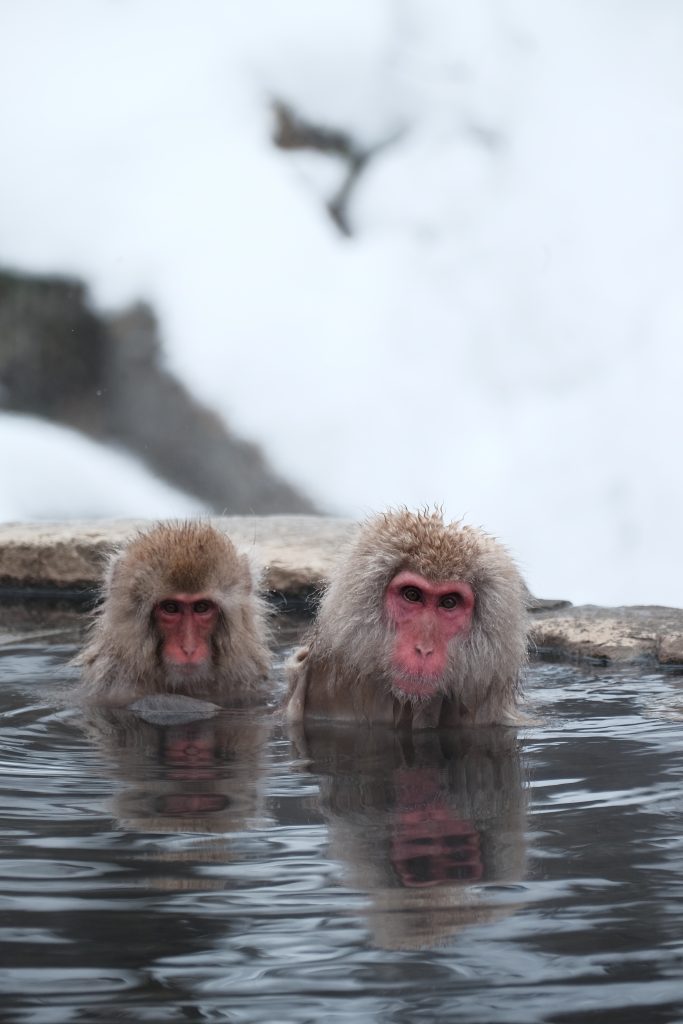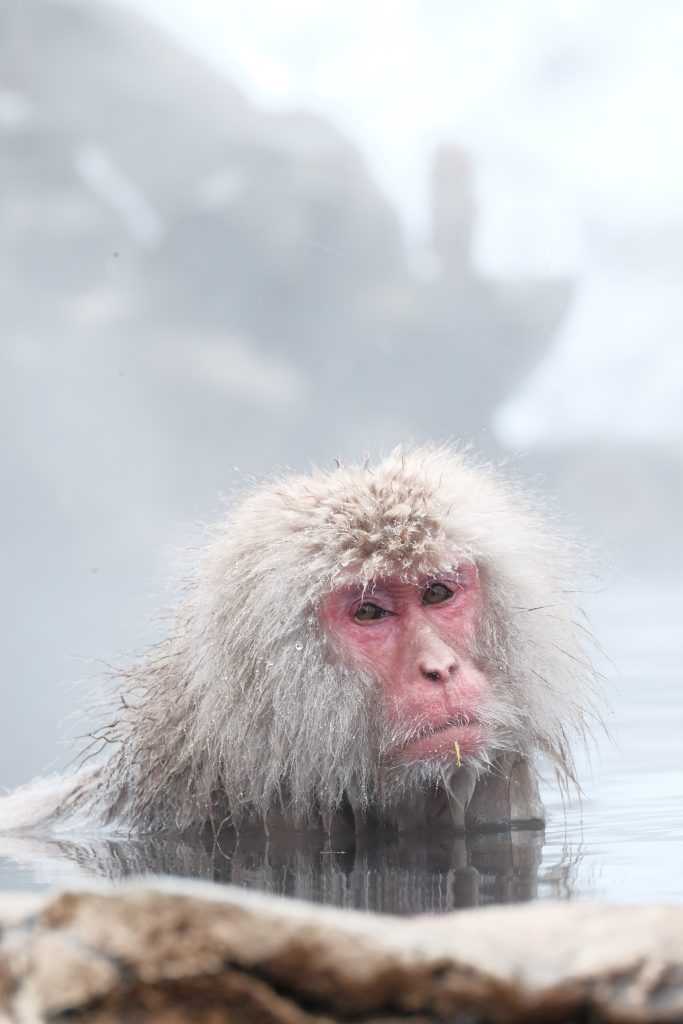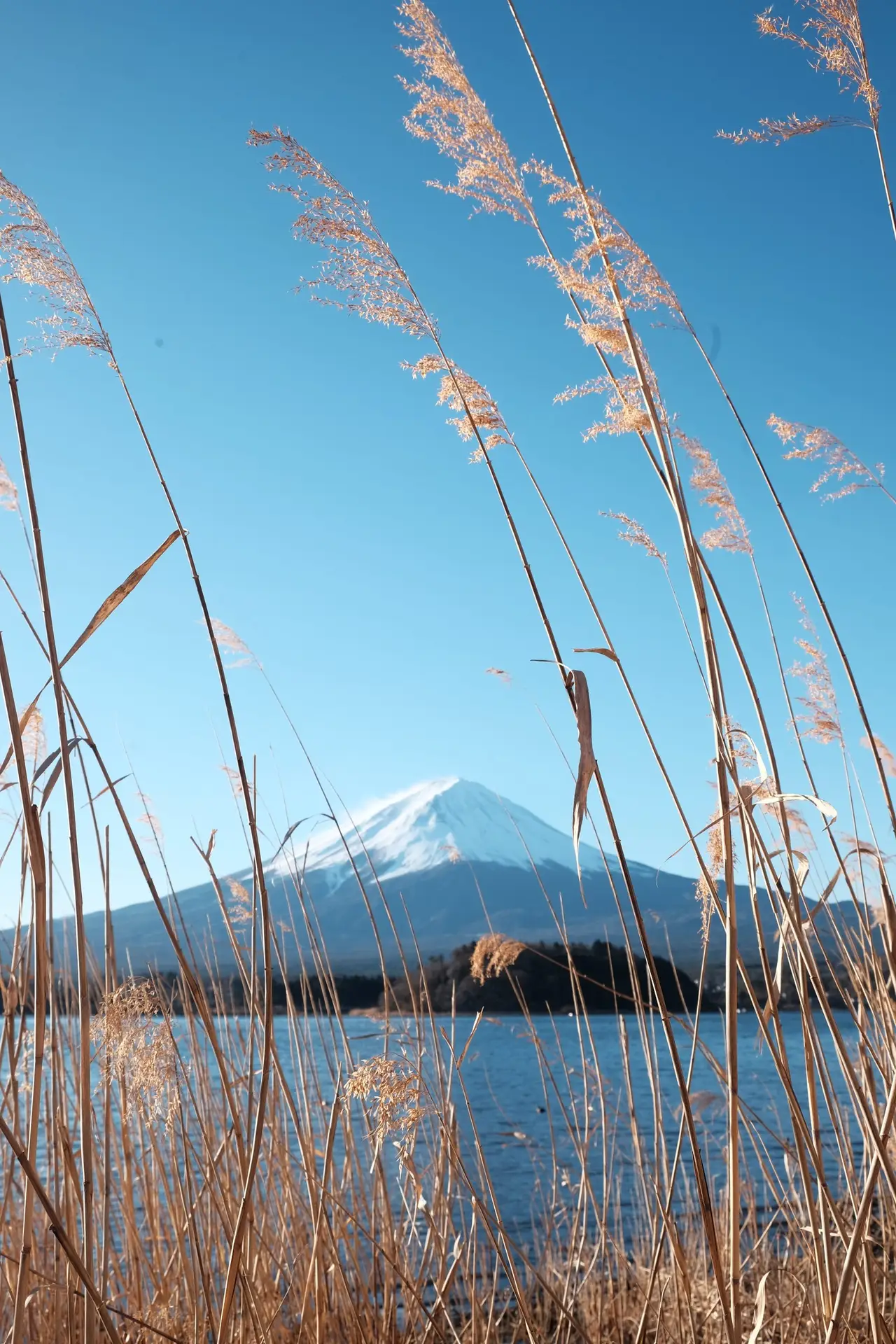A visit to Jigokudani Monkey Park in Nagano Prefecture is one of Japan’s most unique experiences. Watching the famous Japanese macaques, better known as snow monkeys, soak in steaming hot springs while snow falls all around feels straight out of a documentary. Visiting the snow monkeys was one of our favourite wildlife experiences. We loved watching their interactions with each other and seeing each of their personalities and expressive faces. Plus, the park offers some of the best wildlife photo opportunities in Japan.
In this guide we’ve covered everything you need to know about visiting the snow monkeys, from where it’s located and how to get there, to what to expect and where to stay nearby. You can visit the snow monkeys at any time of year, but if you are in Japan in winter, you’ll want to make sure this is on your itinerary.
To help, we’ve put together these other useful guides:
What is the Jigokudani Monkey Park?
Jigokudani Monkey Park is home to over 200 wild Japanese Macaques, otherwise known as snow monkeys. These monkeys are a species only found in Japan and they are the most northerly living monkeys in the world. They live in the steep forests and rugged mountains surrounding the park but come down daily, especially in winter, to warm up in the natural hot spring pools.
You may have seen these red-faced fluffy friends on BBC and National Geographic documentaries, where they’ve been featured for their remarkable habit of bathing in the steaming pools surrounded by snow. It’s the only place in the world where monkeys do this, making it a one-of-a-kind experience.
The monkeys live in large, complex social groups, from large males to newborns. They can be observed from very close and it’s fascinating to watch the dynamics between them as they groom, squabble and sink into the warm waters.
Where is the Jigokudani Monkey Park?
The park is located in Nagano Prefecture, in the northern part of Japan’s Honshu island (the largest island). It sits on the edge of the Joshinetsu Kogen National Park, near the historic small hot spring villages of Kanbayashi Onsen and Shibu Onsen. These villages have been a haven for relaxation for over 1,300 years for both people and the monkeys.
Best time to visit the snow monkeys?
Jigokudani Monkey Park is open year-round, but the best time to visit is in winter, typically December to March. This is when snow blankets the forest and the monkeys reliably gather in the hot springs every day, throughout the day.
In warmer months, the monkeys may still visit, but less frequently. They may be more active early morning and later in the afternoon.
If you want the classic snow monkey experience, snow and steam rising from the pools, then plan your visit for winter.

How to get to Jigokudani Monkey Park
By car:
Driving here either in your own vehicle or a rented car is a convenient option, especially if you are exploring Nagano Prefecture. Parking is available year-round near the snow monkey park trailhead. One point to consider is that the road close to the park can become very icy during the winter, particularly if it has snowed. We saw many cars skidding even with snow tyres on.
Approximate driving times from some major cities:
- From Tokyo: 3.5 hours
- From Kyoto: 5.5 hours
- From Nagano City: 50 minutes
By train and bus:
The nearest major station is Nagano Station, located in Nagano City, connecting to Tokyo via the Hokuriju Shinkansen Line in about 90 minutes.
From Nagano Station, there are 2 options:
- Take the Nagano Dentetsu railway to Yudanaka Station which is the nearest train station to the park close to Shibu Onsen. From here, you can then take a local bus to the park, either the Kanbayashi Line or the Shiga Kogen Line.
- Catch an express bus which runs directly to Kanbayashi Onsen.
Both options from Nagano Station take around 45-55 minutes to reach Kanbayashi Onsen.
By tour:
Alternatively, if you’d prefer a hassle free option, consider booking a guided snow monkey tour. Many include transport from Nagano or even Tokyo, plus extras like visits to nearby onsens, temples and ski resorts.
Walking the trail to the snow monkeys
The entrance to the park is actually located along a 1.6km/1mile trail from the parking lot which all visitors will need to walk. The trail takes you through a forest which is stunning when it’s covered in snow in winter. It is fairly flat making it easy to navigate for all fitness levels, but it can become icy making it more challenging. There are a few steps that visitors must also take.
Once you arrive at the park entrance, you’ll find a small visitor centre where you purchase tickets, as well as toilets, a small gift shop and information. From there, its just a little bit further to walk to the hot spring pools where the monkeys bathe. Don’t be surprised if you meet monkeys on the path before the pools.

Entrance fees and opening hours
Admission: 800 yen per person. The ticket can be purchased at the visitor centre as you enter the park.
Opening hours:
9am-4pm November to March
8.30am-5pm April to October
What to expect when visiting the snow monkeys
Not as wild as you may expect:
This is one of Nagano’s most popular attractions so expect there to be a fair amount of people. Tour groups come and go, so crowds ebb and flow. If you hang around long enough, you will find quieter moments and it certainly doesn’t get as busy as other attractions in Japan.
Additionally, while the monkeys are wild, they are actually fed by the park attendants and the setting doesn’t feel quite as natural or as wild as you may expect. The thermal springs are natural, but the actual pool where the monkeys gather is man-made. The monkeys are viewed from an observation area right next to the pool and you can get very close to them.
Although, it did get busy and it wasn’t quite as ‘wild’ as we expected, in the end it didn’t actually bother us. We were so swept up in watching the monkeys relaxing and going about their day that we just thoroughly enjoyed the experience.
Temperature:
In winter it can get extremely cold, hence why the monkeys sit in the hot springs for hours. When we visited at the end of January, it was just above freezing and snowing. We spent about 3 hours watching the monkeys and we were freezing. The visitor centre offers free hot water so you can go inside and warm up. Our recommendation is to just wear lots of warm layers including a hat and thick gloves.

Where to stay near the snow monkeys
You’ll find several hotels and ryokans (traditional inns) located in the hot spring villages of Shibu Onsen and Kanbayahi Onsen. Many offer access to historic public baths or their own private onsen (hot spring) which offers an additional Japanese experience alongside visiting the snow monkeys.
If you have any questions about visiting the park, we’d love to hear from you in the comments section below.


